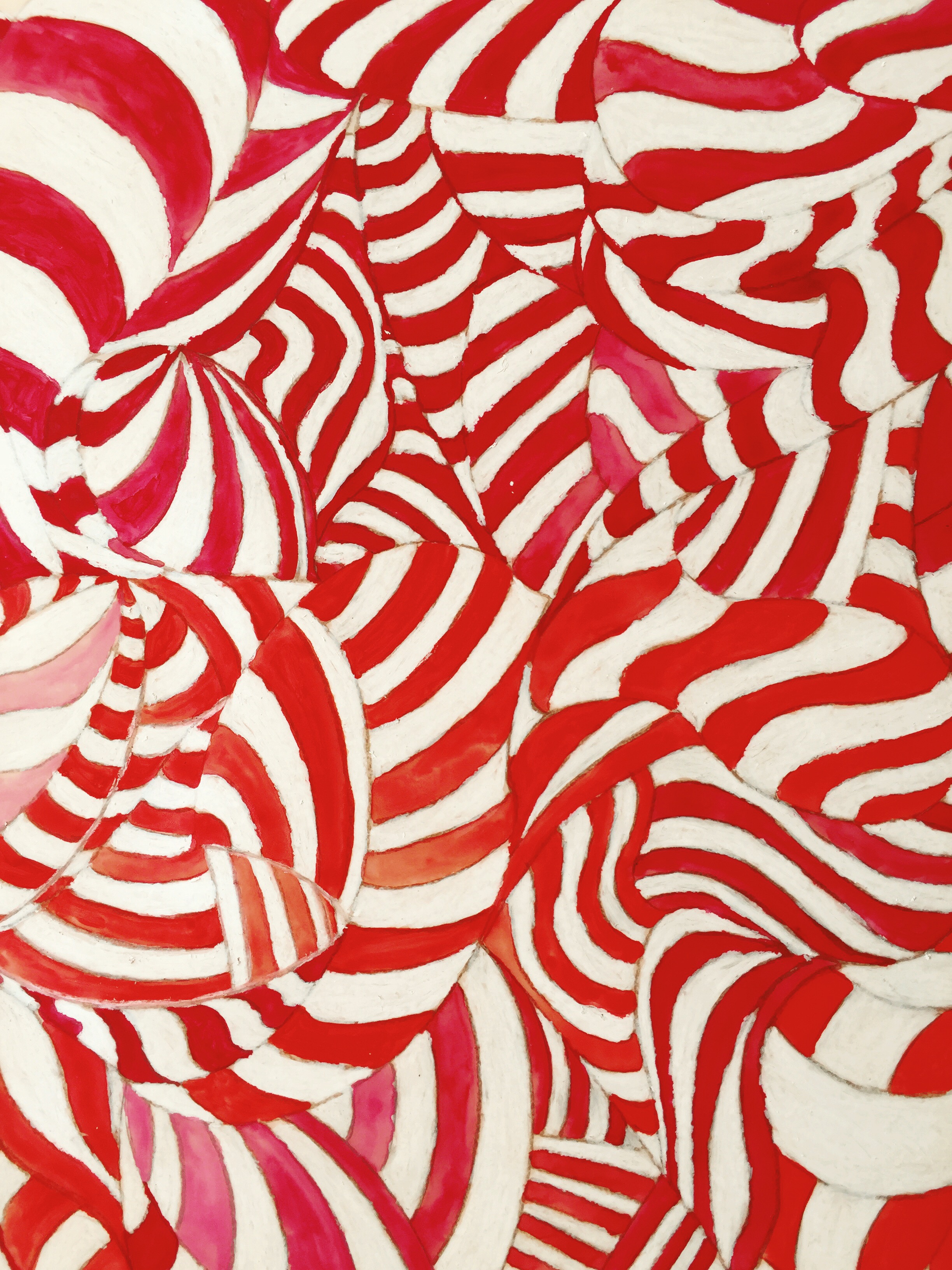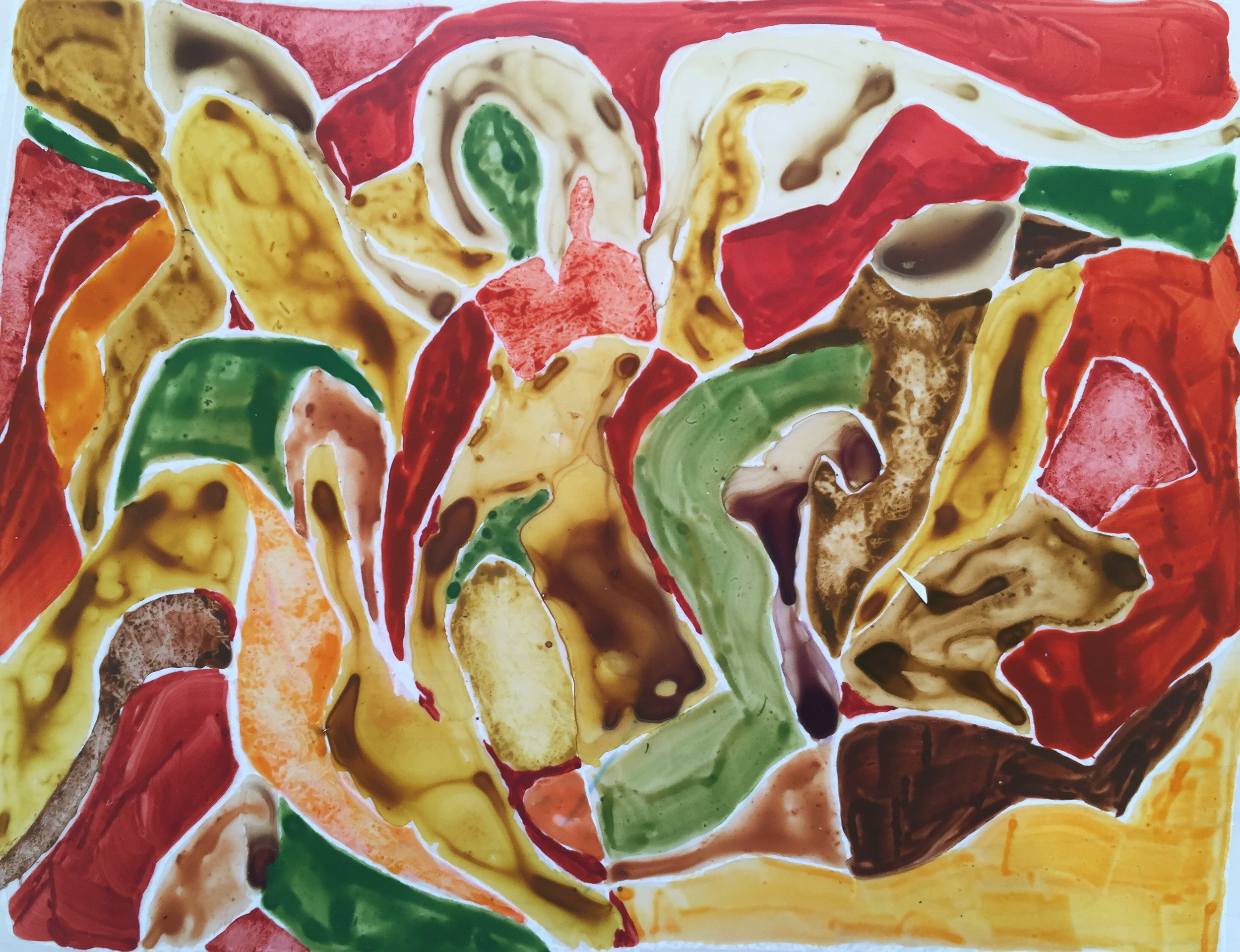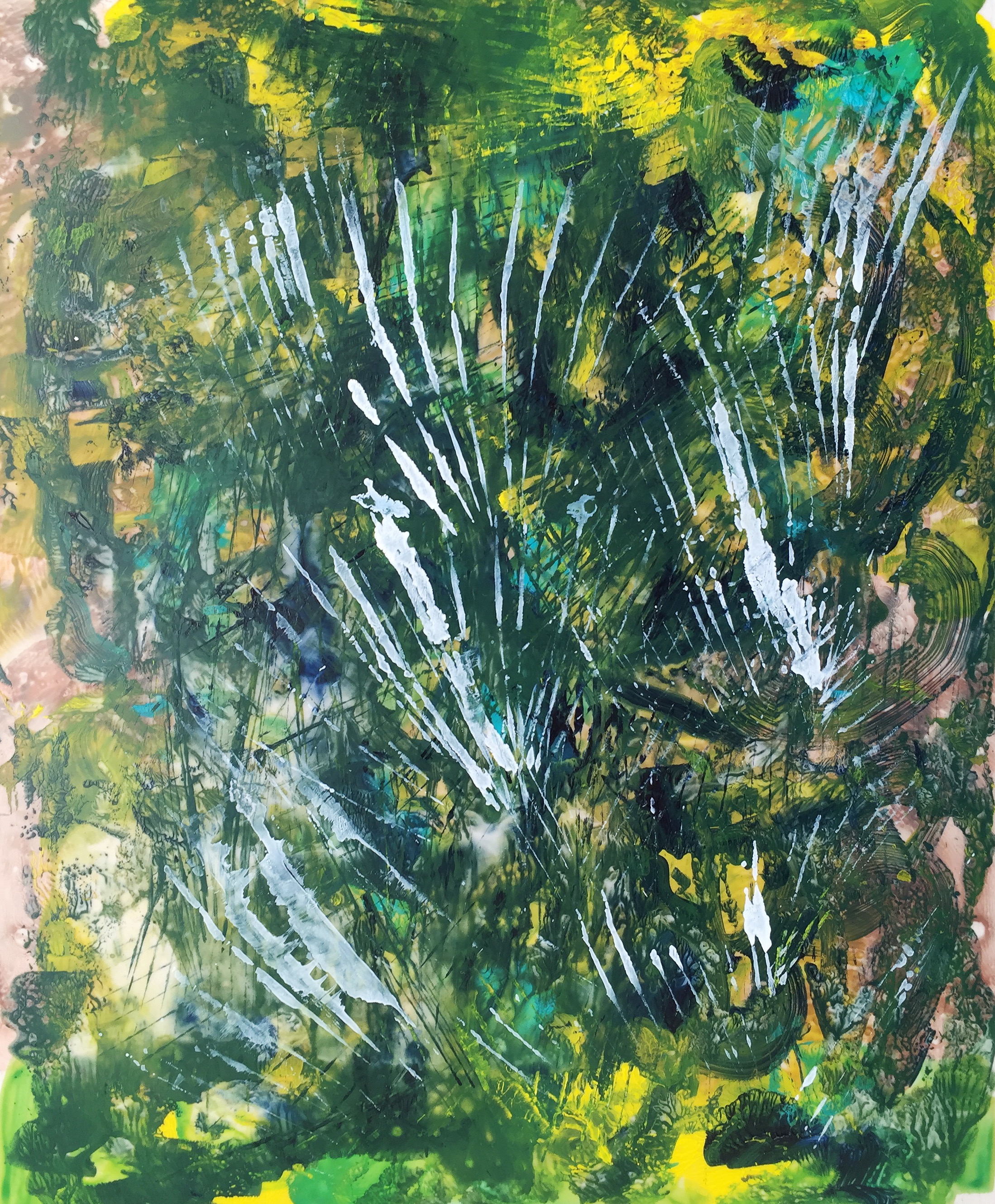In trying to find a language for my process, I have taken to calling the (mostly) abstract paintings I put down as the basis of my most recent mylar collages, first works. These paintings are meditations more so than anything else. I don't necessarily go into them with an outcome in mind, but I do think about colors and shapes and lines. In pushing the paints and inks around on the mylar surface I'm searching for accidents of form — the shape of a leg, an arm, a breast, a vaguely familiar flower or leaf. I try not to actively make these shapes; their beauty is in the spontaneousness of them appearing unbidden with a drop of water there or the swiping away of a line there. When actually making the collages, these "accidents" can sometimes get lost, however, to a newly seen form, to a new idea, to a demand for something different in the collage.
An artist friend of mine came to my tiny studio last year and was horrified to see that I actually cut up these first works; so much so she purchased one to save it from my X-acto knife. "These stand as pieces on their own," she said. I can appreciate what she sees in them, but their value for me lies in them being part of a larger piece, puzzle, collage. The thrill is in re-seeing them outside of their initial context, butting up against another extracted shape both inside and outside of harmony. Isn't that one of the motivations of collage, re-see the familiar and the ordinary? To recontextualize what we thought we have seen or know?
The first works can seemingly lack a common thread, too. And, of that I am pleased. What to make of a hypnotic candy-stripe swirl in gouache only to turn to a roughly done acrylic ink homage to an imaginary still life? The incoherence is part of the process too: what can I do that is unlike the last thing? Where can I go next? Not claiming the "painter" label frees me of style, though there is an emerging vocabulary of semi-circles, drips, and swipes that carry over into the final work.



